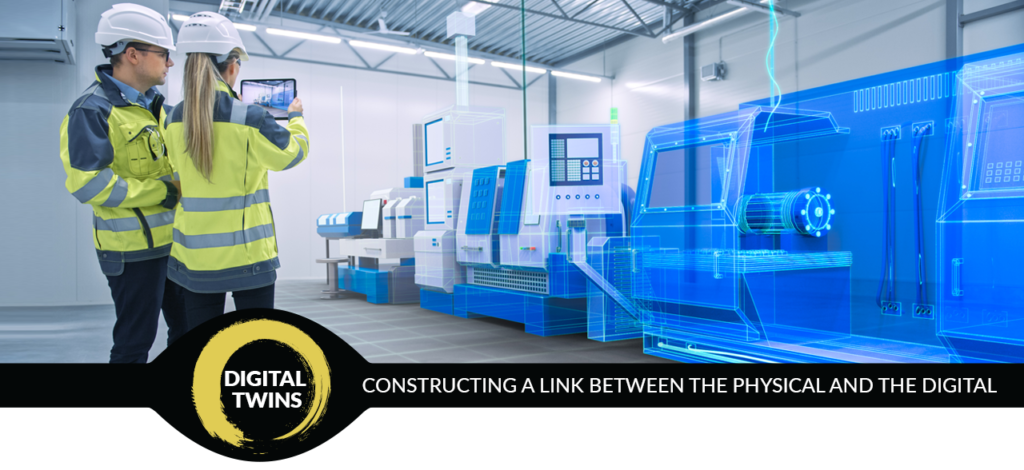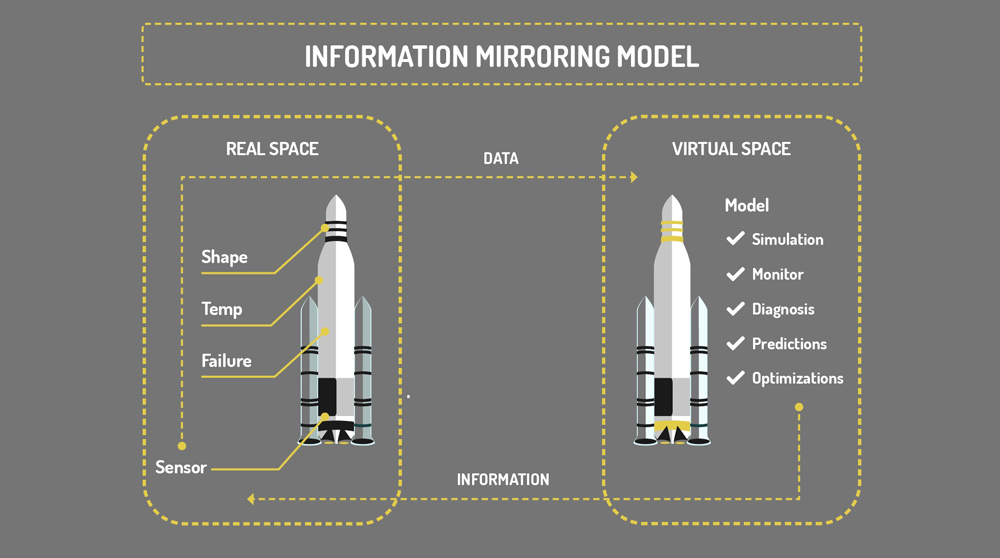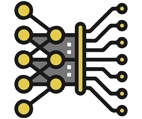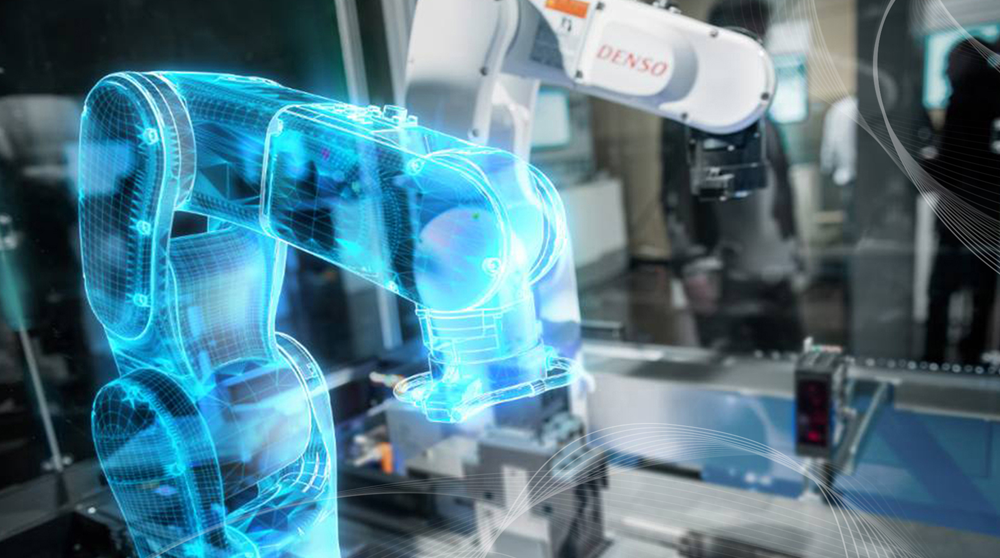
Imagine having an identical digital copy of any and every object in the world. Wanting to see what a book would look like with no pages without having to rip them out or how a car would look (and drive!) without a steering wheel without having to be in the vehicle to find out?
Digital twins allow you to create exact digital copies of physical objects in order to virtually collaborate with others, simulate scenarios, make more accurate predictions and generate instructions that contribute to refining and improving physical products.
With a prediction of 50% of all corporations using digital twins by the early 2020s and an expected global digital twin market value of US $106.26 billion by 2028, it is clear that digital twins are here and that they are here to stay.
A digital twin is an identical, virtual copy of a product. In the manufacturing industry in particular, digital twins are used to digitally reflect multiple facets of systems, machinery, products and processes. IT professionals use sensors and collected data, such as physical details as well as analytics data, from the ‘physical’ twin in order to construct its digital copy. While they can take many forms, all digital twins encapsulate the essence of the physical products and systems.
This technology allows engineers, analysts or researchers to add elements to an existing product and run simulations in a number of scenarios, without having to expend physical resources that may fail to work out or be destroyed. This convergence with the digital and physical is proving to be invaluable with a number of industry-leading companies, such as Siemens, Microsoft and Bosch, using the digital twin concept to identify issues and challenges in order to further increase their operating efficiency and reduce costs during testing stages.
And that, surprisingly, is not all digital twins can be used for. From enhancing the innovation in the automotive and aircraft sectors to building real-time models in the oil and gas industry, assisting with drilling, adding value to medical research and training and smart-city planning and management in cities like Singapore, digital twins are steadily gaining momentum and value across the board.
The digital twin concept is set to play an instrumental role in the evolution of a smarter and more efficient manufacturing industry.
It is evident then, that digital twins give management more control over resources and expenses while ensuring that their products, machines and systems are optimised and safer which, in return, is supporting revenue and profitability growth across a number of markets and industries.

Fig. 1.The digital twin concept model, or information mirroring model, by Dr. Grieves consists of three elements: physical products’ actual space, virtual products in virtual space and the data that links the physical and virtual together. Model information sourced from Springer.
While, to some, digital twin technology may be seen as something new, this concept has been explored since it was discussed by David Gelernter in 1991, in his book aptly titled Mirror Worlds In 2002, Dr. Michael Grieves formally introduced this concept to the public and highlighted its importance as an asset in Product Lifecycle Management (PLM). Later, in 2010, (we can’t believe that it’s already twelve years ago either!), NASA highlighted the concept in action and introduced the term ‘digital twin’ in their roadmap report on the digital simulations they used for testing spacecraft and capsules.
With a rapid uptake in other industries and over 30 years of research and development, it is no surprise that evolution has taken its course and that the technology and platforms that allow companies like SatoriXR to create accurate digital twins has advanced, and continues to advance, at a rapid pace.
At the pinnacle of the Industrial Revolution 4.0, a correspondence between the physical and digital is essential. When it comes to digital twin implementation, the benefits are numerous. While challenges such as globalization and new manufacturing processes can slow down the creation, utilisation and simulation of digital twins, the comparative benefits make digital twins a feasible, if not necessary, technology to implement.
The benefits and advantages of digital twins include:
With rapidly advancing technology in the virtual reality (VR) and augmented reality (AR) industries, innovative companies like SatoriXR have been able to increase the capabilities of digital twins. This is largely due to advances in:






The incredibly exciting digital twin concept continues to provide businesses with the opportunity to unlock a myriad of potential and possibility through connecting the physical and digital planes. With digital twins driving increasingly significant business and economical value across industries, there is no doubt that the technology will continue to develop and that those who do not adopt it will, at the very least, be at a disadvantage.
By 2022, 70% percent of manufacturers will be using the technology to conduct process simulations and scenario evaluations.
- CSUN
While realising the digital twins’ full potential may require system and data integration across entire systems, creating a digital simulation of an object or, in the future, processes such as manufacturing lifecycles, supply chains and more, can give industry leaders an incredibly insightful view of their company’s operations.

As a business leader, your goal is to identify and implement technology and processes that make sound business and economic sense. The digital twin concept is an asset to every industry, however, incorporating it into your business can be a complex process. While it is critical to first identify the needs of your business and to test the viability of the concept to determine its complexity against your business’s unique economic architecture and device needs, partnering with an experienced team can make incorporating innovation and smarter technology simpler.
At SatoriXR, we believe in you and your business. With digital twins supporting integrated, collaborative and adaptable planning and predicting and manufacturing processes, it is, in the opinion of many, an essential technology in the fourth industrial revolution. Get in touch with us to schedule a demo or find out more about our innovative AR products and solutions that are designed to give your customers an individualised and immersive experience with your product.
© 2024 SatoriXR Private Limited